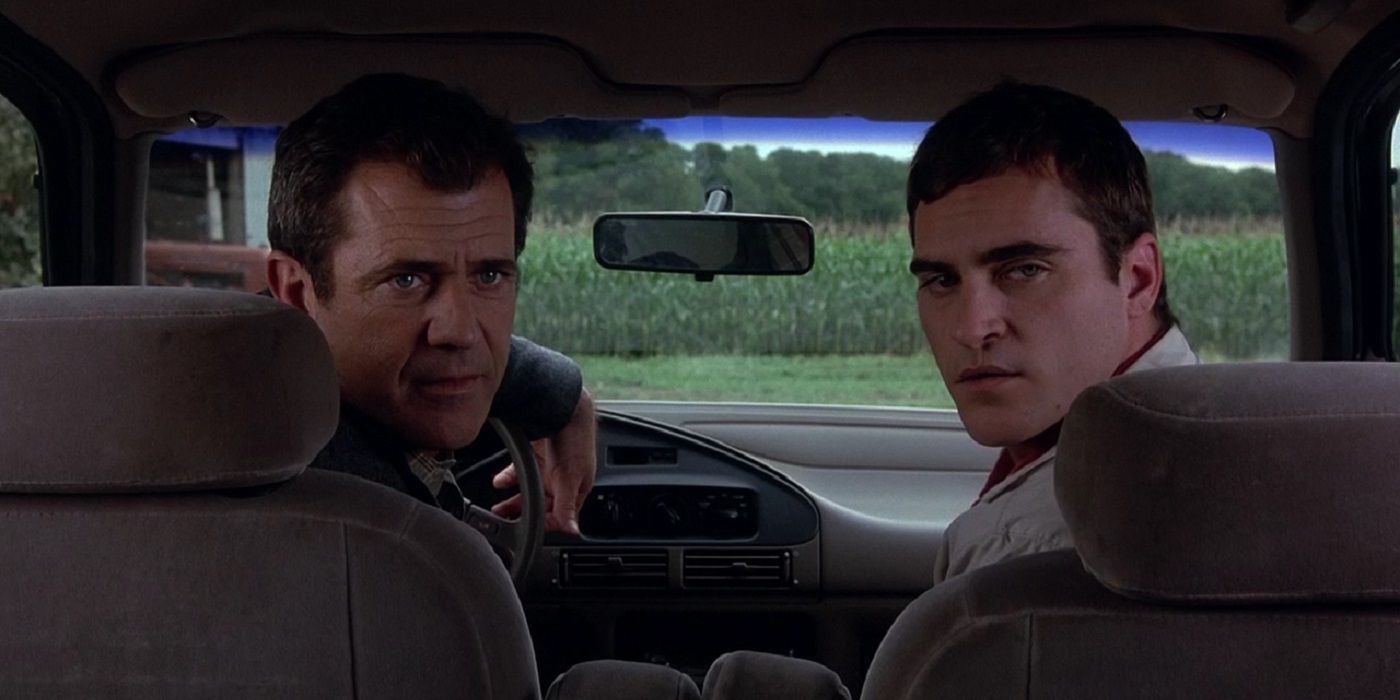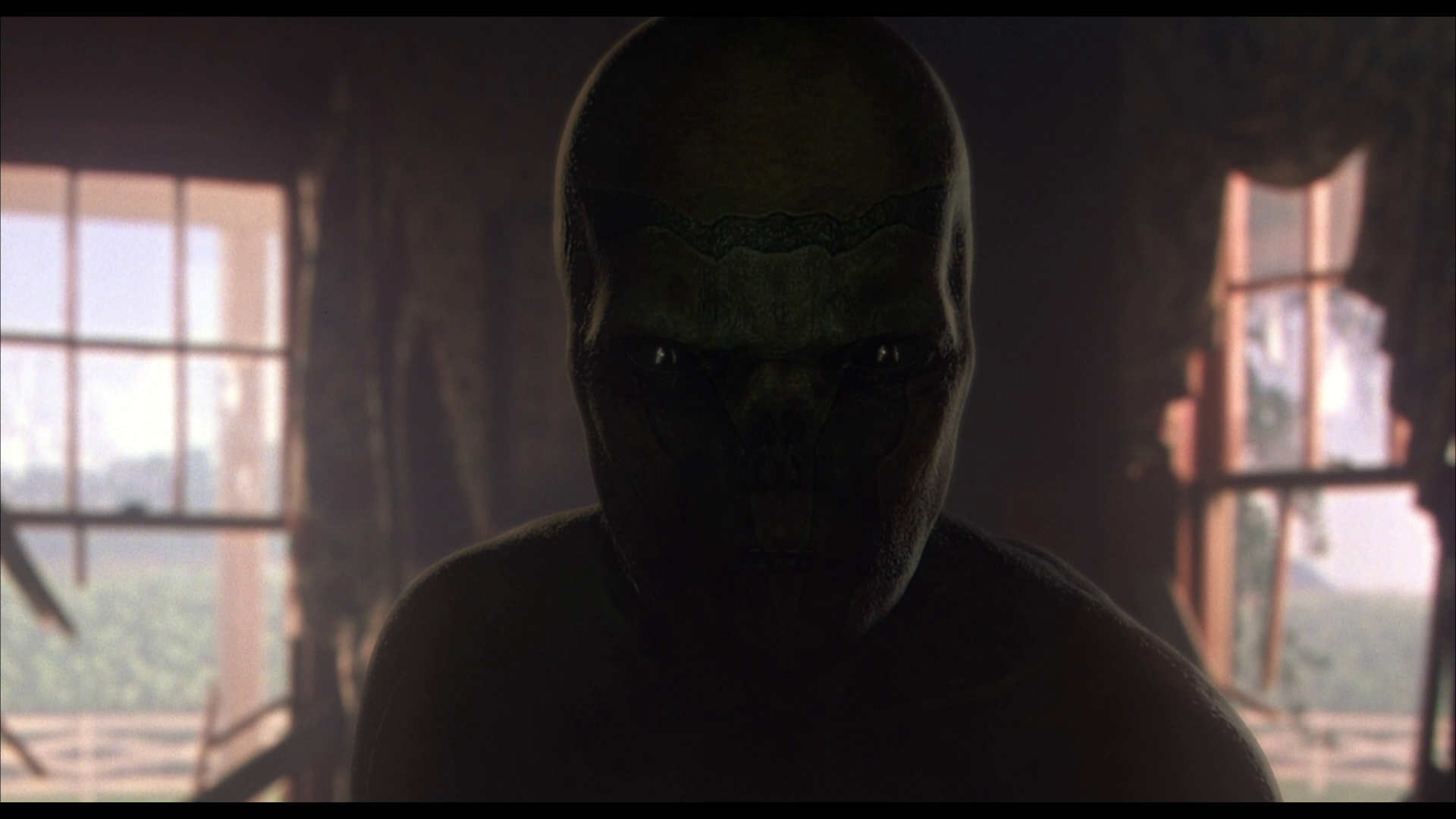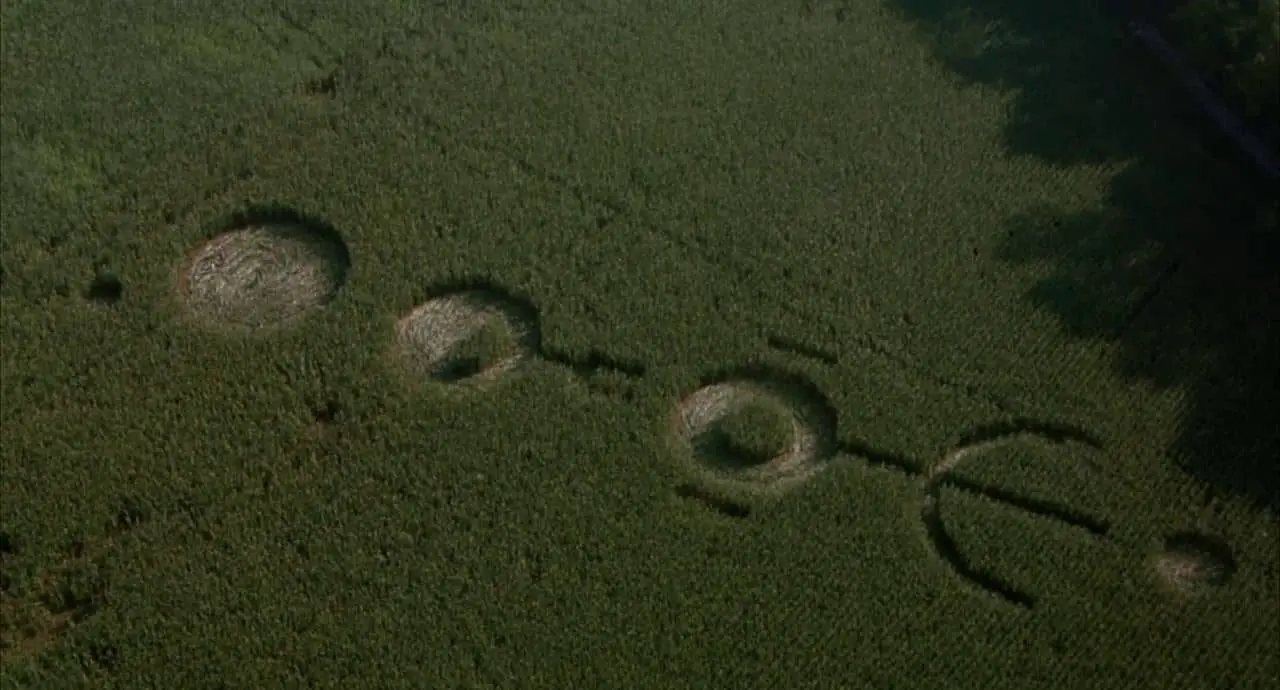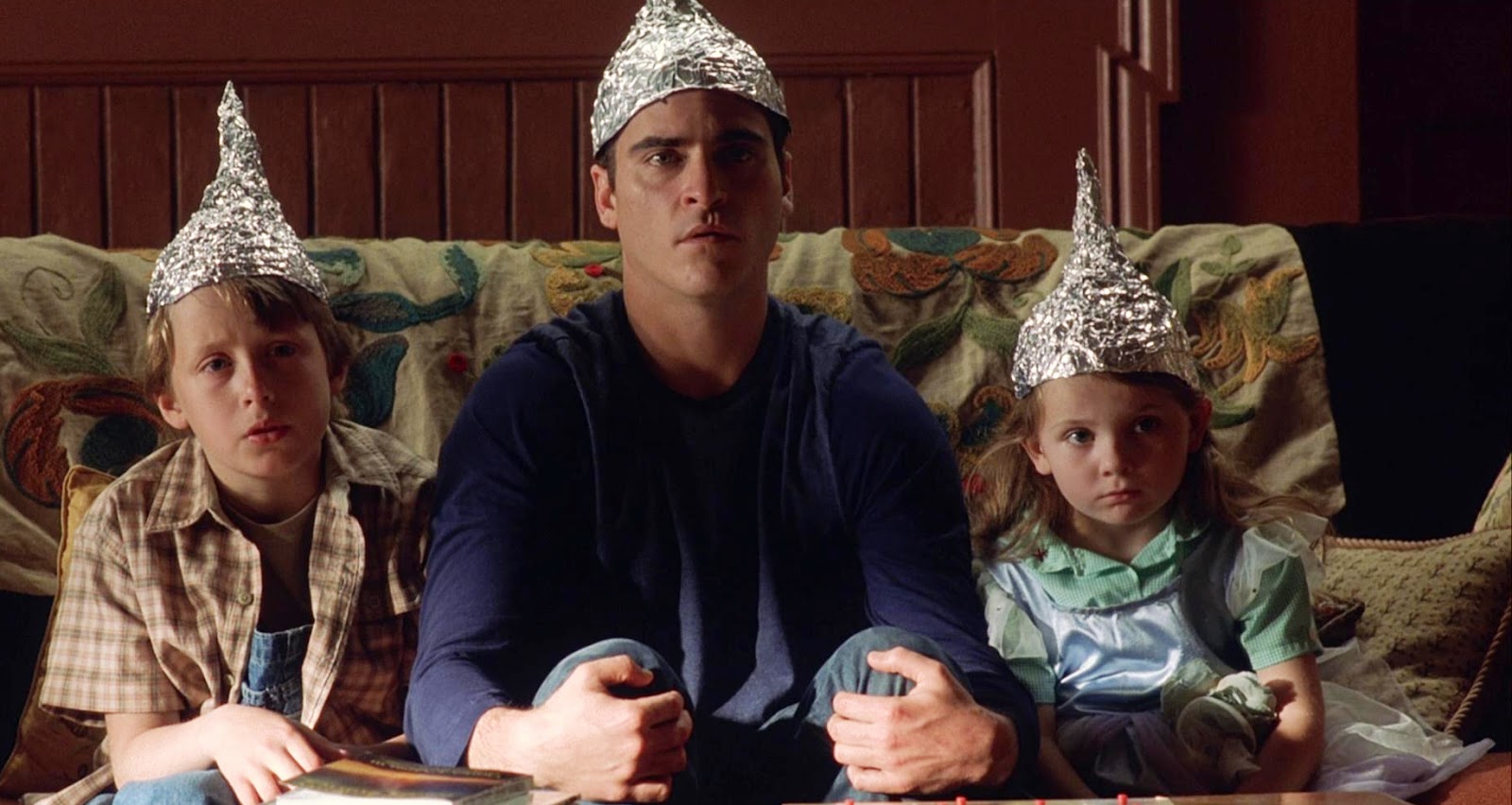M. Night Shyamalan's career has definitely had its ups and downs. After the Academy Award-nominated Sixth Sense, Shyamalan was on a roll, following up with fan favorites Unbreakable and Signs. His career took a dip with Lady in the Water and The Happening, and a lot of people got off the Shyamalan train after The Last Airbender and After Earth dropped. He finally made a comeback with The Visit, which got fans all the more excited for Split and the conclusion of the Eastrail 177 Trilogy, Glass. He's made some great films, and some forgettable duds, but his early work has been praised by fans and critics alike. Here are 5 reasons Signs is Shyamalan's best flick, and 5 why it's his worst.
10. Worst: M. Night Shyamalan Gave Himself A Big Role
Not only is the film written, produced, and directed by M. Night Shyamalan, but his sizable role as Dr. Ray Reddy - a veterinarian who accidentally killed Graham's (Mel Gibson) wife when he fell asleep driving one evening - makes Signs feel like a vanity project. Shyamalan also gives his character a lot of the exposition lines (about the water, for example), spoon-feeding the audience his genius via dialogue that he himself delivers. Thankfully, Shyamalan has some serious acting chops, so his screen time doesn't distract from the film's story.
9. Best: It Features Great Cinematography
Tak Fujimoto (Silence of the Lambs, Ferris Bueller's Day Off) sets a quiet and unsettling scene with long still shots of the Bucks County, PA environment, mainly the family's home and surrounding property. Shots of the backy
ard and the cornfield create a similar juxtaposition as The Shining - a setting that is simultaneously claustrophobic and too big and mysterious to comprehend. Our characters are stuck on Earth, in their farmhouse, next to their cornfield in a small Pennsylvania town, while trying to avoid extraterrestrials that traveled from another planet and ultimately invade the family's small, otherwise safe world.
The film also strays away from bright colors, instead using earth tones to create a sense of realism. Close, intimate shots also help set the tone and suck the audience into what the family is feeling, thinking, and experiencing from their point of view.
8. Worst: There Are Some Odd Side Characters
There's an old man at the bookstore who yells about commercials, convinced the crop circles are a hoax to sell more soda. A young lady at the pharmacy feels the need to clear her conscience by telling Graham every curse word she's used recently. There's even a veteran who explains military procedures so creepily that you start to wonder if he himself is one of the extraterrestrials threatening the town. While these minor characters add compelling exposition to the story, their quirks sometimes make their addition to solving the extraterrestrial mystery harder to take seriously.
7. Best: The Main Cast Give Great Performances (Even the Kids)
Mel Gibson delivers a composed performance as Graham, who is forced to be strong for his kids after his wife Colleen dies, and feels responsible for protecting the family from any further harm. Gibson is calm and authoritative in group scenes, but more anxious and emotional when he's alone doing his own investigation of the events surrounding the crop circles. His chemistry with Joaquin Phoenix is almost like a parent-child dynamic in that Merrill looks to Graham for advice, comfort, and direction, and is reacting to the situation like the children are.
Bo (Abigail Breslin) and Morgan (Rory Culkin) are just as brave as their father, but they are more honest about their feelings throughout the film. The dinner scene in particular is impressive, with every family member emotionally confronting the issues that have been building up since Colleen's death. Performances by child actors are usually hit or miss, but fear not, these kids bring youthful curiosity and can cry on cue.
6. Worst: The Visual Effects Are Subpar
Given that it was filmed in 2002, the aliens don't look as intricate and realistic as they might if the film were made today. The computer generation didn't blend the aliens into their environment very well, which is especially noticeable in the climax. To alleviate this, Shyamalan frames them in shadows, in dim lighting, and far away from the camera, like the Brazilian home video Merrill saw on the news. Doing so also makes them more mysterious, which helps build suspense.
5. Best: The Story Is Deep & Full of Symbolism
From one of the very first shots in the film, Shyamalan sets religious undertones to represent Graham's loss and ultimate regaining of faith, one of the subplots in Signs. In the beginning, there is a prominent wide shot of a faded outline of a cross that once hung in their hallway. Later in the film, we find out that Graham used to be a priest, but lost his faith in God when He took his wife from him; however, God sent the aliens to Earth to give Graham a 'sign' that He's real and is watching over him. In the end, Graham realizes that his wife's death was meant to be and that it saved the rest of the family's lives in the long run, giving him faith again.
Many other symbols in the film represent signs from God, one of which is lights in the sky, which Merrill and Graham discuss in an emotional scene about believers and non-believers. The crop circles are signs themselves, and are "intended to be seen from the sky," where both the aliens and God spiritually exist, and where the characters reach for answers.
4. Worst: The Dialogue Is Cheesy
One of M. Night's Shyamalan's tropes is cheesy dialogue, which often provides comic relief in his films. But sometimes, the lines he writes are so ridiculous that it takes you out of the story for a minute, like when the military recruiter asks, "Why aren't you in the pros, making stacks of cash and getting your toes licked by beautiful women?" Or when Graham is trying to comfort his kids after they read a book about extraterrestrials, suggesting that everyone "calm down and eat some fruit or something." There is also a scene toward the beginning in which Merrill and Graham try to scare an alien off their property by running around the outside of the house yelling profanities and threats, which end up sounding more comical than threatening.
3. Best: The Original Score Is Fantastic
Carrying a consistent 3-note melody, James Newton Howard's original score for Signs is creepy and unforgettable. Its simplicity calls back to classic horror scores, like those from Hitchcock films, a filmmaker who inspired the work of M. Night Shyamalan. Depending on the scene, Howard's 3-note motif alternates between major and minor chords, chilling us to our bones one minute, and giving us hope in the next.
There is also an epic opening credits sequence in which the music imitates the plot. It sets the tone that something big is coming, and is followed up by a quiet, early morning shot outside the family's home. From then on, Shyamalan has the audience wondering when and where the ticking time bomb is going to go off, and Howard makes each moment all the more thrilling.
2. Worst: The Aliens' Weakness Is Water
Though the water is used as a 'holy' symbol - in this case used to wash away Graham's personal 'demons' (aliens) - it doesn't make complete sense. You'd think that a group of extraterrestrials who developed the technology to travel all the way to Earth from their home planet would have the technology to investigate the elements that are present on Earth and determine if it's a safe environment for their kind. It is possible that in M. Night Shyamalan's lore, the aliens have never encountered water and truly had no way of knowing it'd be harmful. It is also possible that they were fully aware of the danger and still traveled to Earth for resources regardless because they were that desperate. Either way, the plot twist surrounding the water raises some questions and could have used more clarity.
1. Best: It Focuses On One Family
Some extraterrestrial films show invasion on a global scale, with giant spaceships and mass destruction a la Independence Day. In Signs, however, the threat feels more close to home. We get to know the family and follow them through their little discoveries, and the film's limited scope makes the audience think about how we'd react if extraterrestrials really descended onto Earth and started banging on our front door. Shyamalan's focus on the story, the characters, and their emotions rather than big budget special effects makes Signs more scary and suspenseful than a typical alien-invasion blockbuster.











